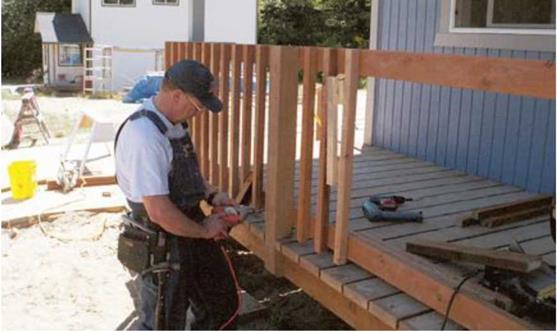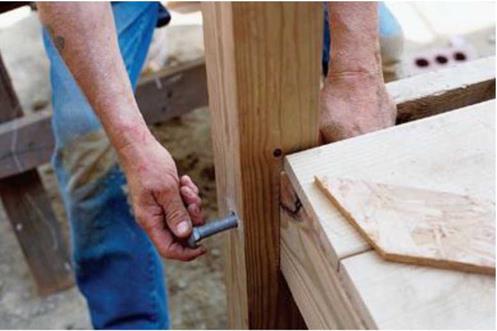. HOW TO BUILD SAFE RAILINGS THAT WILL MEET CODE
To make porch railings and stair handrails both safe and legal, you need to know the basic rules and regulations that dictate how they’re built. The specs here cover most areas of the country, but codes do vary from region to region, so always check with your local building department.
■ In most regions, any deck higher than 30 in. off the ground needs a railing.
■ Stairs with more than three risers (three steps) need a handrail.
■ Stairs that are 44 in. wide or more need a handrail on both sides.
■ The height of a handrail, measured from the nose (the front edge of the stair tread), should be between 32 in. and 36 in. The handrail should extend the length of the stairs.
■ The width of a handrail must be between 1 in. and 2 in. so that it’s easy to grab.
■ The railing height on a deck guardrail should be between 36 in. and 42 in.
■ The balusters used on porches and stairs should run vertically, so children can’t climb onthem. The spacing between them must be 4 in. or less, so children can’t squeeze through.
■
The bottom rail must not be more than 4 in. above the deck.
Posts, rails, and balusters must be precise. The clean lines on a finished porch or deck depend on accurate railing installation. Here, the posts are notched to fit against the rim joist. The ends of the decking boards overhang beyond the rim joist, even with posts.
 [Photo © Larry Haun]
[Photo © Larry Haun]







Leave a reply